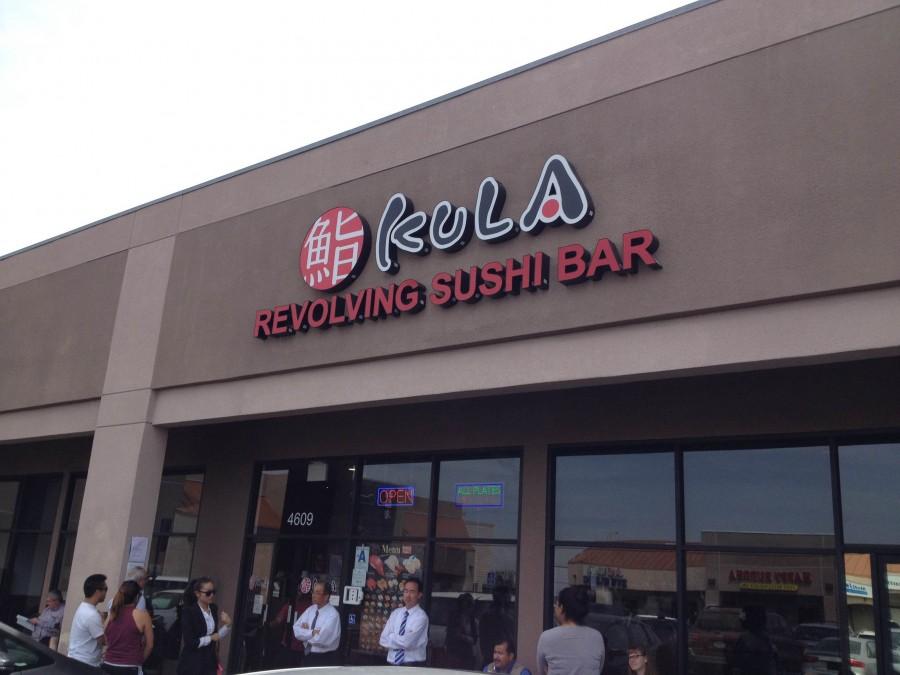It’s no secret Convoy Street is the integral hub for Asian food in San Diego.
Enter Kula, the revolving sushi bar. The conveyor belt may seem a bit gimmicky at first glance, but Kula is the real deal when it comes to sushi.
First things first, make sure to arrive early. Though Convoy has the largest Kula branch with seating for up to 98 diners, wait times grow to an hour and beyond. Reservations are not accepted.
Once inside, diners are free to dive right into eating, and that’s one of the beauties of dining at Kula. Once seated, diners can grab any of the plates coming their way. Plates feature two to four pieces of sushi — two for nigiri (thinly sliced pieces of raw sushi over rice) or three to four slices per roll.
Patrons can also select and order specific items from the tablet at their table to have it delivered straight to them. The made-to-order sushi is custom-ordered and shipped out on the secondary conveyor belt, which provides a nice convenience for ordering.
The order tablet allows patrons to browse the menu and see what is available that night. They may run low on ingredients at times, so it’s helpful to have a clear and present view of the menu with easy navigation.
Each visit to Kula offers something new. One day it might be a spider roll (fried soft-shell crab with avocado and spicy mayo) or its seared beef with yakiniku sauce (Japanese-style barbecue on rice).
“The experience is unlike any other (sushi spot) in San Diego,” economics senior Karen Rai said.
The expansive menu features more than 100 types of sushi and sides, and each plate of sushi is $2.25.
Kula serves a wide range of sushi. From the traditional nigiri to special San Diego rolls to hand rolls, there’s a plate for everyone. Take a simple piece of salmon for example. Kula offers a regular salmon plate, a salmon belly plate, a soy-sake-marinated salmon plate, a seared salmon plate with Japanese mayo, a garlic ponzu salmon plate and an umami oil salmon plate — as well as the handful of rolls that feature salmon.
“I liked the wide selection of rolls, and the portion sizes are perfect for those who like to try a bunch of different rolls without the price of all-you-can-eat (sushi),” Rai said.
Sides can start at $2, such as the miso soup, and they can be expensive as $4.99, such as the shrimp tempura udon. Kula also has a delectable dessert menu, offering traditional Japanese desserts such as green tea mochi ice cream and its must-have Japanese-style soy milk donuts.
“The dessert (at Kula) is unbeatable,” Rai said. “They offer so many more options than other sushi restaurants I’ve been to.”
Kula even has its own spin on cleaning up. Diners are treated to prizes and animations for plates they discard down a chute at each table. For every five plates deposited, the touch screen congratulates diners and beckons for more plates, encouraging them to eat more. It also dispenses a prize every 15 plates for lucky winners.
Eating at Kula is exciting, delicious and well worth the wait.









